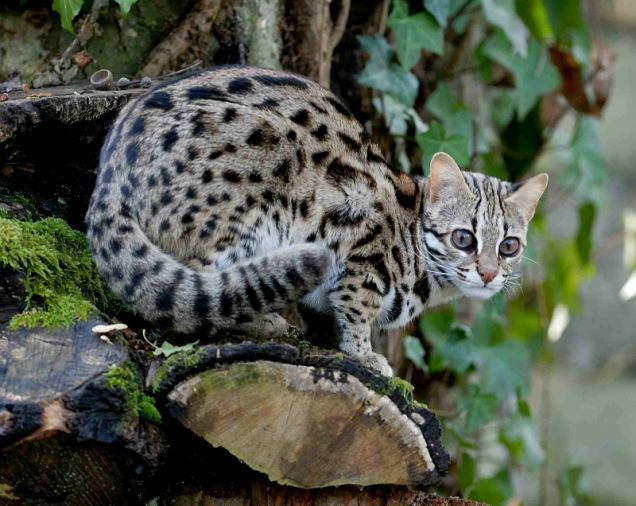
Prionailurus bengalensis (Leopard cat)
| Common name | Leopard cat |
| Latin name | Prionailurus bengalensis Kerr,1792. |
| Local name | Cheeta bill |
| IUCN/WPA/Indian status | Least conecern/I/Uncommon |
| Social unit | Solitary SIZE: 45-75 cm.TL: 19.5-31.5 cm.WT : 3-4 kg. |
| Size / weight | 45-75 cm.TL: 19.5-31.5 cm.WT : 3-4 kg. |
| Description | In India the leopard cat is the most common small cat after the jungle cat from which it can be instantly told apart by its longer leaner appearance and long legs. The coat is brownish buff to ochre and the muzzle has some white in it. Two black streaks are present between the eyes and ears, and two white ones between the nose and eyes. At one glance it looks like a miniature leopard. Unlike leopards however this cat does not have rosettes on its buff coat. Instead it has solid black spots or patches throughout the body which merge into two broad streaks at the shoulders. Its limbs longer than those of other cats give it a graceful appearance. The tail is ringed and has a black tip. The feet are lean and shows webbing. |
| Behavior | An extremely versatile cat it is arboreal by nature and is also comfortable in winter. |
| Distribution | Distribution through the Himalayas and Terai, eastwards to the north –east and southward to the Western Ghats. P.b. trevelyani is present in Jammu & Kashmir and Himachal Pradesh, west of the river Satluj. |
| Habitat | Found in grass land, scrub and moist deciduous forests. It lives with ease in a variety of forests and even close to human habitation. P.b. trevelyani inhabits rocky and less forested habitat(up to 3000 m) |
| Best seen | Corbett NP, Uttarakhand |



